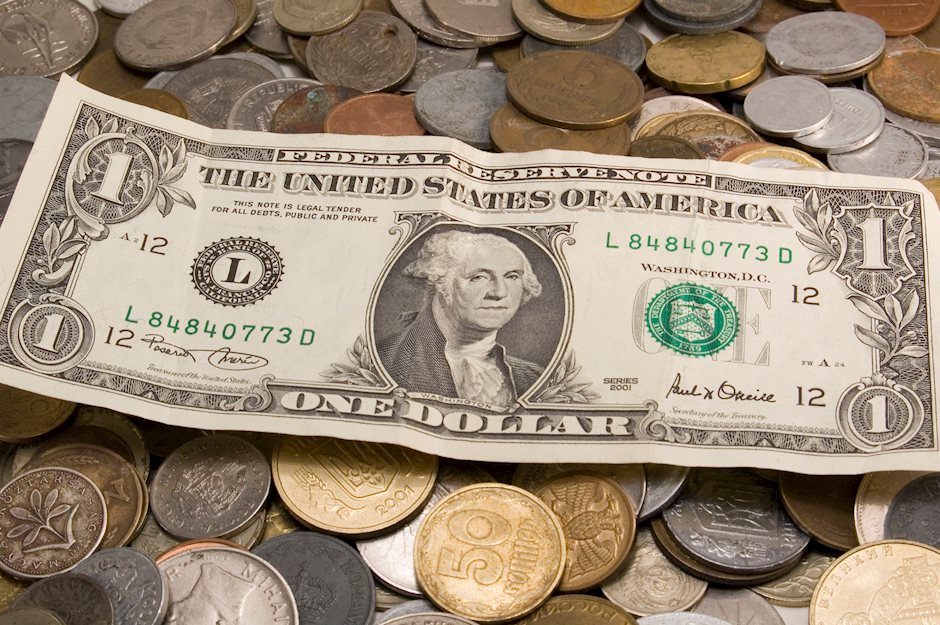US Dollar Index moves above 104.00 as yields recover, ISM PMI awaited
- The US Dollar receives support as Treasury yields rebound from multi-month lows.
- The upside of the Greenback could be limited due to the dovish sentiment surrounding the Fed’s policy trajectory.
- Fed Chair Jerome Powell stated that a rate cut in September is "on the table.”

The US Dollar Index (DXY), which measures the value of the US Dollar (USD) against six other major currencies, recovers its intraday losses due to a recovery in US Treasury yields. The DXY trades around 104.10 with 2-year and 10-year yields on US Treasury bonds standing at 4.28% and 4.05%, respectively, during the Asian session on Thursday.
The US Dollar faced challenges due to the dovish sentiment surrounding the Federal Reserve’s (Fed) policy trajectory. Fed decided to keep rates unchanged in the 5.25%-5.50% range at its July meeting on Wednesday.
On the data front, traders await further direction from the US economic data including ISM Manufacturing PMI and weekly Initial Jobless Claims, which are scheduled for release later on Thursday. On Wednesday, US ADP Employment Change rose 122,000 in July and annual pay was up 4.8% year-over-year, data reported on Wednesday. This reading followed the 155,000 increase (revised from 150,000) recorded in June and came in below the market expectation of 150,000.
During a press conference post-interest rate decision, Federal Reserve Chair Jerome Powell stated that a rate cut in September is "on the table," while the Federal Open Market Committee (FOMC) did not want to commit to anything in the statement. Powell added that the central bank will closely monitor the labor market and remain vigilant for signs of a potential sharp downturn, per Reuters.
However, the FOMC indicated in its statement that it does not foresee cutting rates until it has greater confidence that inflation is sustainably heading toward 2%. They require more progress on inflation before considering a cut in September unless a significant decline in the labor market begins to outweigh the slow progress on inflation.
US Dollar FAQs
The US Dollar (USD) is the official currency of the United States of America, and the ‘de facto’ currency of a significant number of other countries where it is found in circulation alongside local notes. It is the most heavily traded currency in the world, accounting for over 88% of all global foreign exchange turnover, or an average of $6.6 trillion in transactions per day, according to data from 2022. Following the second world war, the USD took over from the British Pound as the world’s reserve currency. For most of its history, the US Dollar was backed by Gold, until the Bretton Woods Agreement in 1971 when the Gold Standard went away.
The most important single factor impacting on the value of the US Dollar is monetary policy, which is shaped by the Federal Reserve (Fed). The Fed has two mandates: to achieve price stability (control inflation) and foster full employment. Its primary tool to achieve these two goals is by adjusting interest rates. When prices are rising too quickly and inflation is above the Fed’s 2% target, the Fed will raise rates, which helps the USD value. When inflation falls below 2% or the Unemployment Rate is too high, the Fed may lower interest rates, which weighs on the Greenback.
In extreme situations, the Federal Reserve can also print more Dollars and enact quantitative easing (QE). QE is the process by which the Fed substantially increases the flow of credit in a stuck financial system. It is a non-standard policy measure used when credit has dried up because banks will not lend to each other (out of the fear of counterparty default). It is a last resort when simply lowering interest rates is unlikely to achieve the necessary result. It was the Fed’s weapon of choice to combat the credit crunch that occurred during the Great Financial Crisis in 2008. It involves the Fed printing more Dollars and using them to buy US government bonds predominantly from financial institutions. QE usually leads to a weaker US Dollar.
Quantitative tightening (QT) is the reverse process whereby the Federal Reserve stops buying bonds from financial institutions and does not reinvest the principal from the bonds it holds maturing in new purchases. It is usually positive for the US Dollar.
Author

Akhtar Faruqui
FXStreet
Akhtar Faruqui is a Forex Analyst based in New Delhi, India. With a keen eye for market trends and a passion for dissecting complex financial dynamics, he is dedicated to delivering accurate and insightful Forex news and analysis.

















